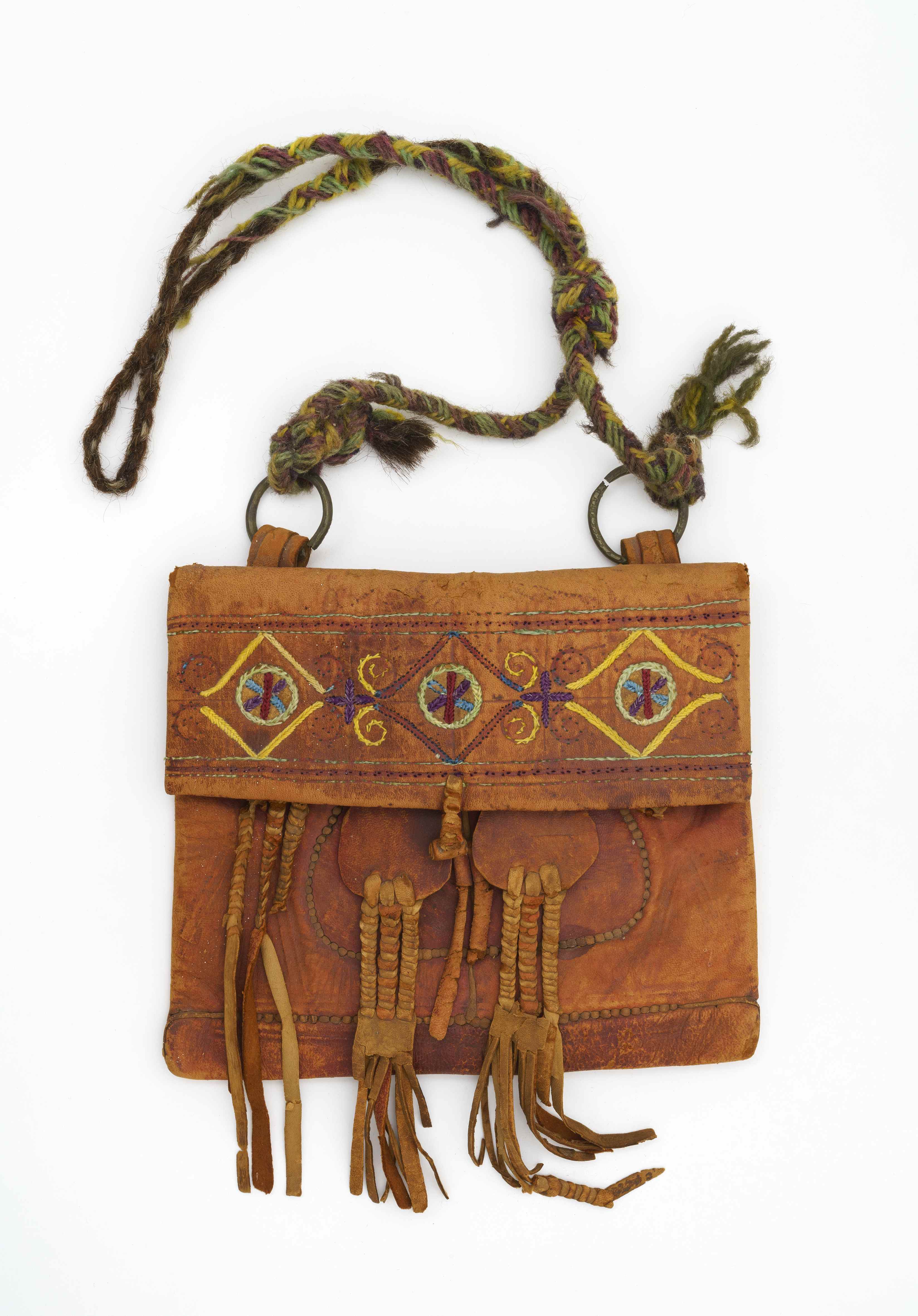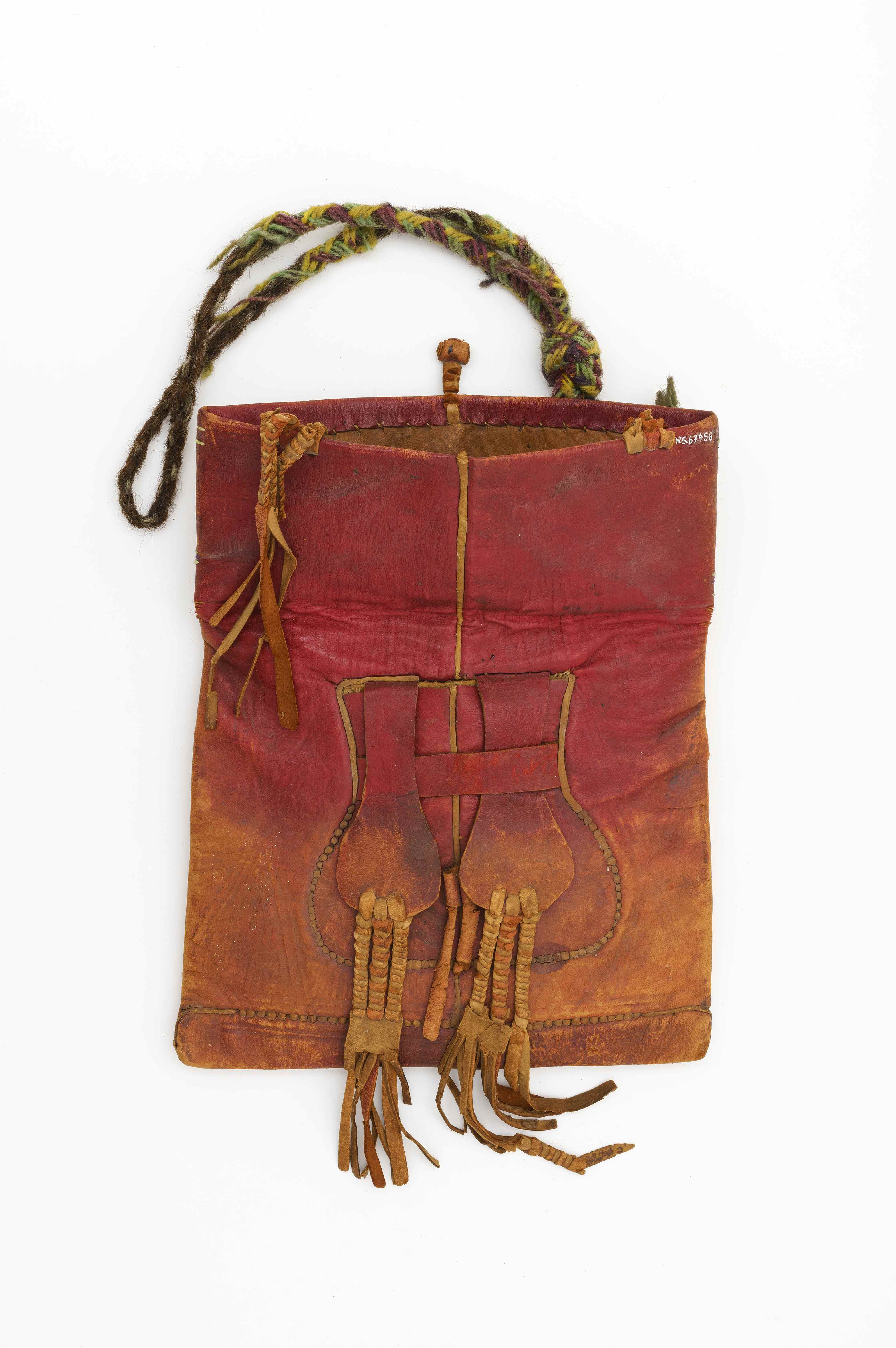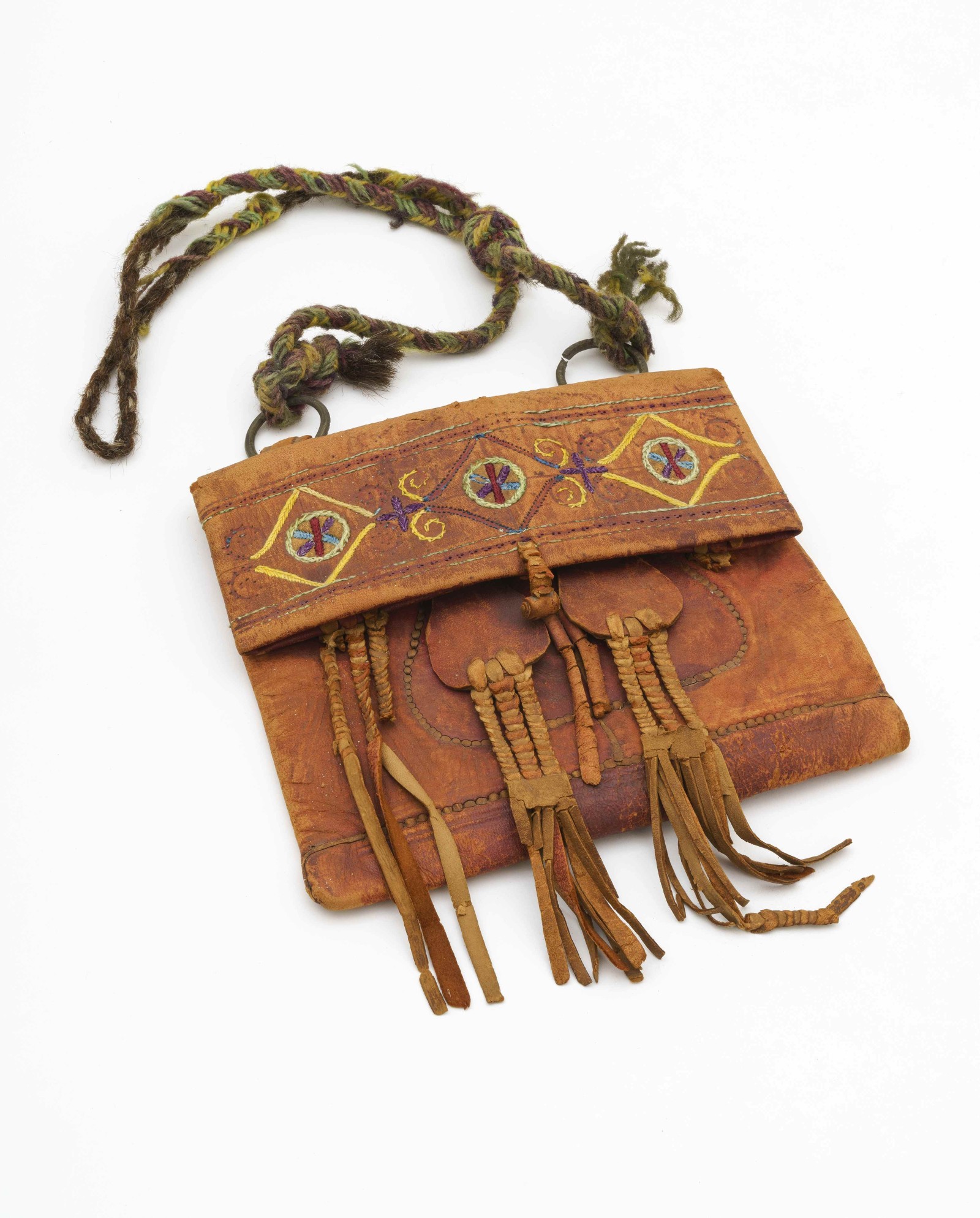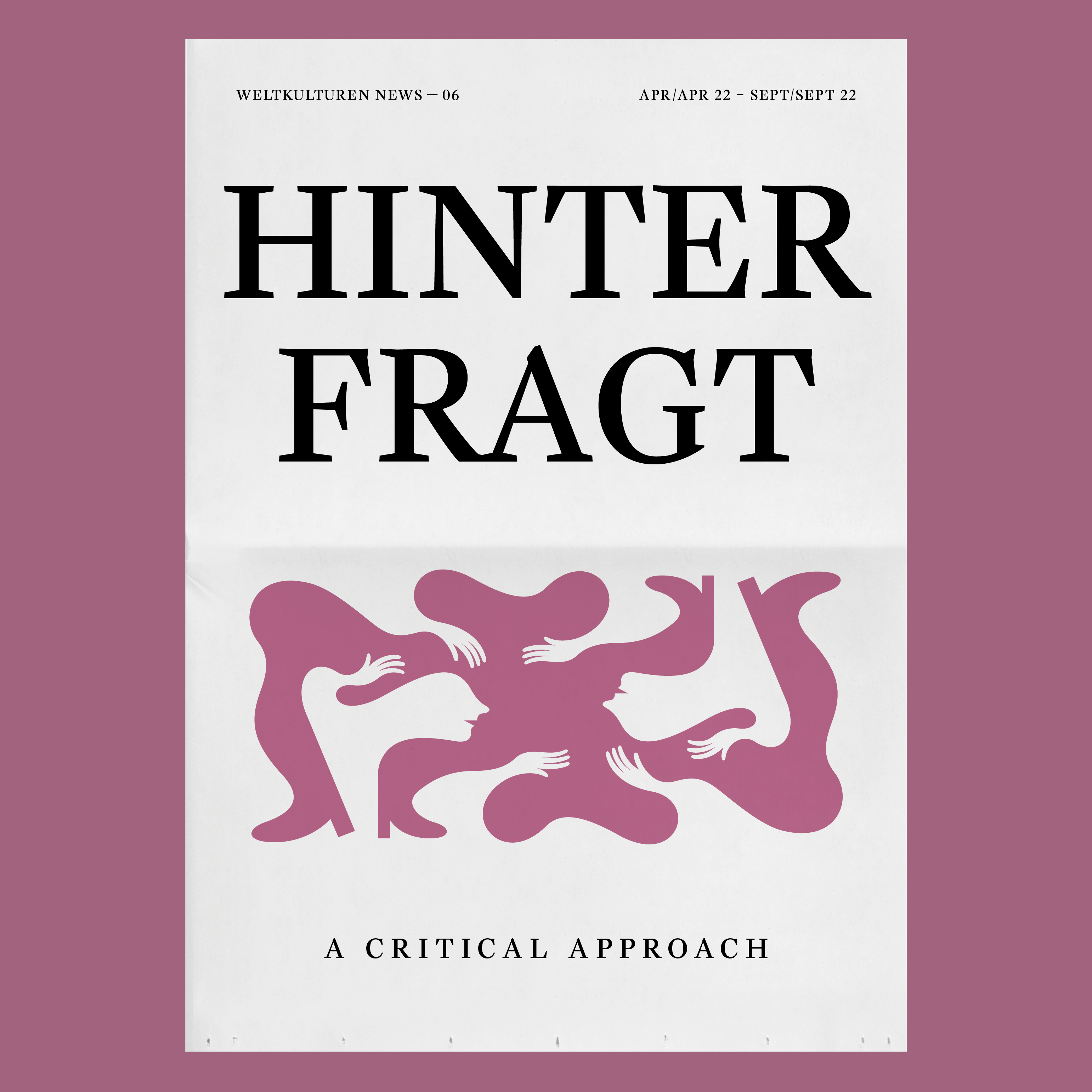LIGHT AND SHADE - HOW COLOURS FADE
Conservators Mareike Mehlis and Kristina Werner give insight on the effects of light on museum objects
Light is undoubtedly fascinating. On the one hand it is a prerequisite for people being able to see colour, yet it also has the power to destroy those colours. A bag from Africa, for example, seems completely fine at first glance. Made of brown leather, it is decorated with colourful embroidery.

Leatherbag. Africa. Provenance not documented. Leather, wool, cotton yarn, iron. Gift of Joachim Gockeln, 2010. Photo: Wolfgang Günzel
Only upon opening the bag do you discover its true glory – for under the flap the leather is a bright red. In fact, the brown leather was once dyed red all over. Over the course of time this colouration has faded away due to the effects of light, remaining intact only in concealed areas which are protected from brightness.
But how did that happen? Fundamental to this process are light waves, which also govern the principle of how we see. Visible light hits a surface at various wavelengths and, depending on which wave lengths are reflected, appears in front of our eyes as a particular colour. In this case, the red leather absorbs rays from every wavelength apart from those that correspond to the colour red. These waves are reflected and perceived as red by our eyes. If an object is white, it must have reflected all the visible light. Black objects, by contrast, absorb all the wavelengths of visible light. The various wavelengths play a key role in destroying colours too. Short-wave radiation (invisible ultraviolet radiation and violet light) is high in energy and thus more damaging than long-wave radiation (invisible infrared radiation and red light). This means that the destruction wrought by light primarily affects colours that reflect the weaker red light and absorb the higher energy violet light. For this reason, red and green fade first, with blue being affected last of all

In the case of this once-red bag, this energy has led to the molecules of red dye becoming excited and entering into a chemical reaction with substances in the air. In the process, chemical bonds in the molecules of dye are destroyed and the entire structure is changed, primarily producing materials which have lost their capacity to absorb or reflect light, and which thus appear transparent to us.
Generally speaking, light damage is much more significant when an object is first subjected to light, and as the exposure continues the danger decreases. For this reason, objects which have never been displayed are at most risk. These include book illuminations, for example, which are always protected from the light when the book is closed. If an illumination is placed on show, the danger of being damaged by light is extremely high.
The same is true with this African leather bag: if it were left open when placed on display, we would expect the final remaining sections of red to change very quickly. As it is impossible to recreate the original colouration of a faded object through restoration and conservation techniques, conservators are obliged to take suitable steps which would prevent an object becoming damaged from light in the first place.
Bio
Mareike Mehlis, conservator, studied ‘conservation and restoration of archaeological, ethnographic and decorative arts’ objects’ at the Stuttgart State Academy of Art and Design and graduated with a diploma. Kristina Werner, conservator, studied ‘restoration and conservation of wooden artefacts and modern materials’ at the Cologne Institute of Conservation Sciences and graduated with a Master's degree.
This article appeared in Weltkulturen News 04 "Colourful" (April to September 2021).
You can subscribe to the current issue of Weltkulturen News free of charge here:
 Leatherbag. Africa. Provenance not documented. Leather, wool, cotton yarn, iron. Gift of Joachim Gockeln, 2010. Photo: Wolfgang Günzel
Leatherbag. Africa. Provenance not documented. Leather, wool, cotton yarn, iron. Gift of Joachim Gockeln, 2010. Photo: Wolfgang Günzel

